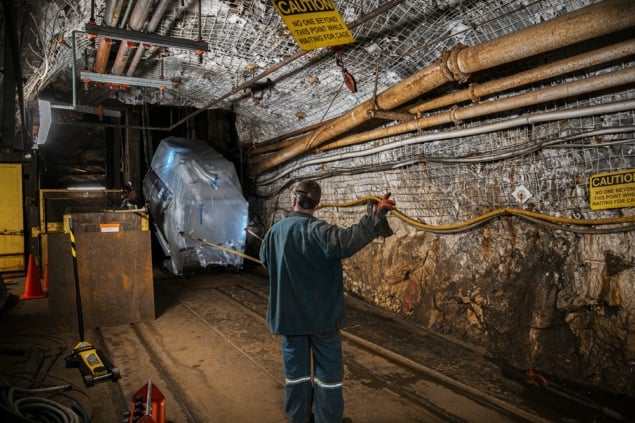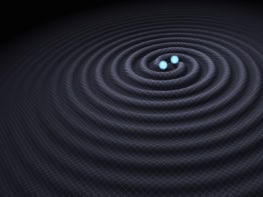
The main component of the LUX-ZEPLIN dark-matter detector has been installed at the Sanford Underground Research Facility in Lead, South Dakota.
The central cryostat for the experiment, which weighs about 2200 kg, was successfully lowered some 1500 m underground last week. Over the coming months, the detector will be wrapped in layers of insulation and then next year be filled with around 10 tonnes of ultra-pure liquid xenon.
LUX-ZEPLIN is expected to begin operation in July 2020 when it will become the largest direct detection dark-matter experiment in the US. It will search for weakly interacting massive particles – a leading dark-matter candidate – with scientists hoping to capture flashes of light that are produced when dark-matter particles interact with the heavy xenon atoms. Dark-matter constraints tightened after LUX no-shows
LUX-ZEPLIN, funded by the US Department of Energy (DOE), is expected to be around 100 times more sensitive than its predecessor, the Large Underground Xenon experiment.
The DOE’s Lawrence Berkeley National Laboratory is leading the construction of the facility, which includes around 220 participating scientists from 38 institutions around the world.



